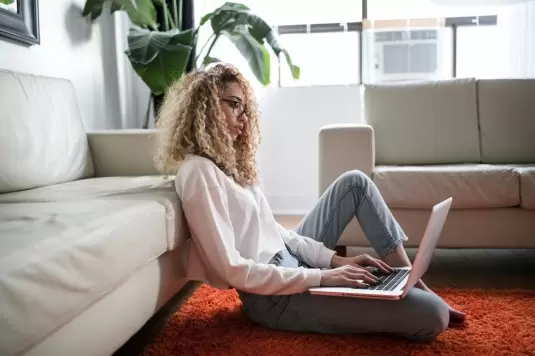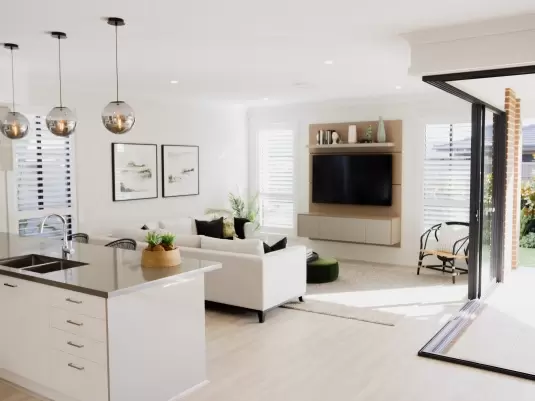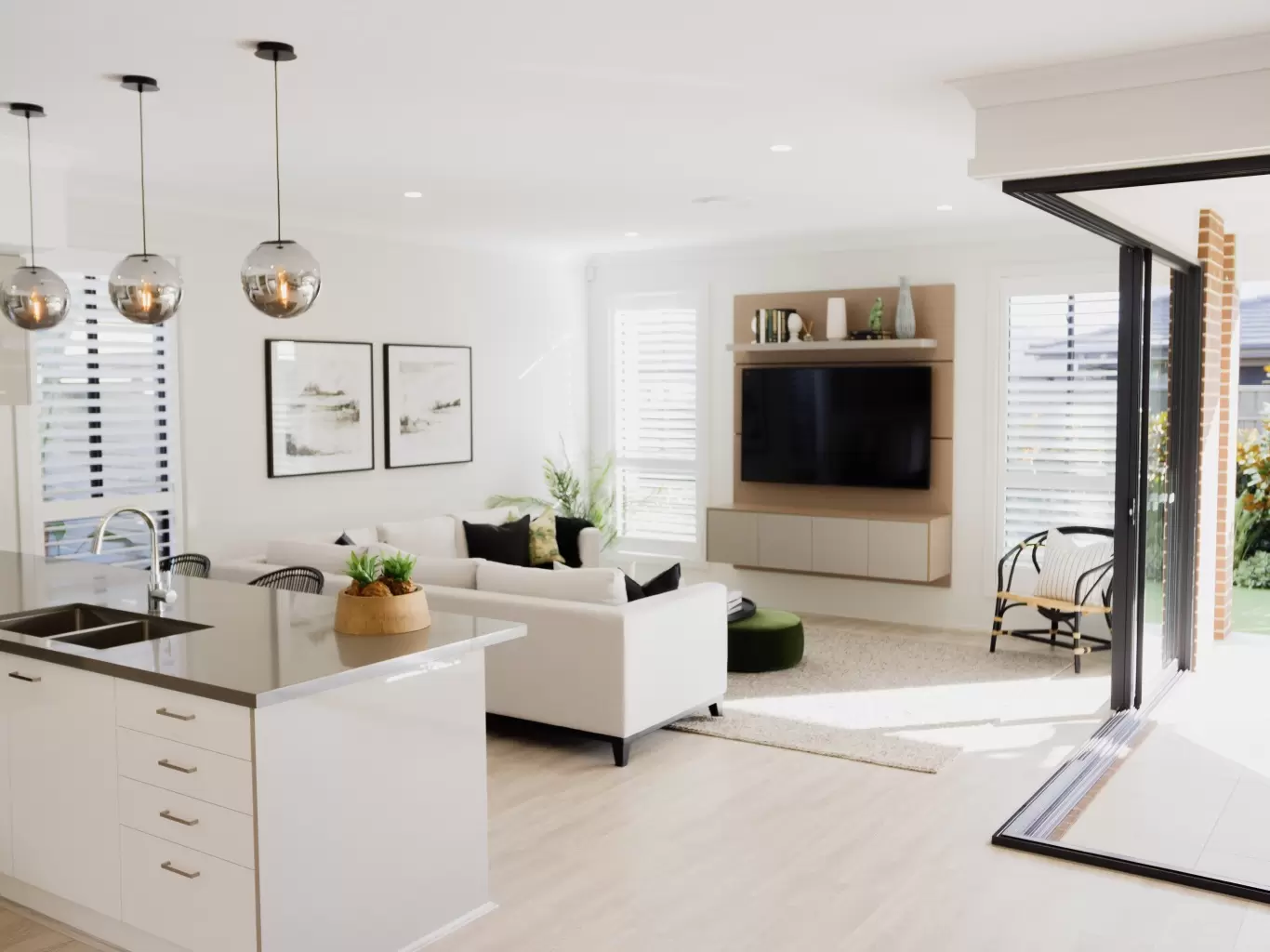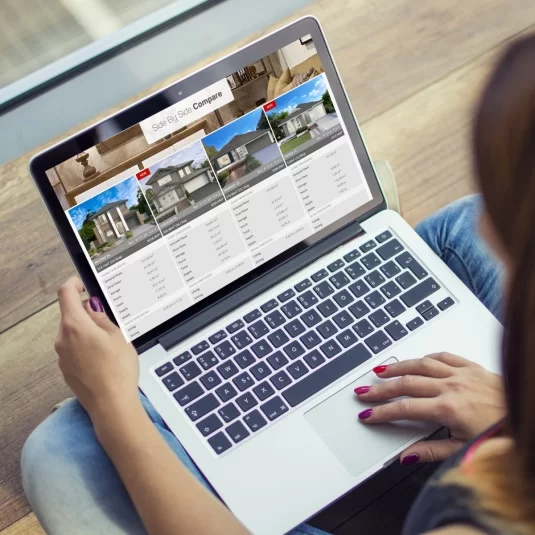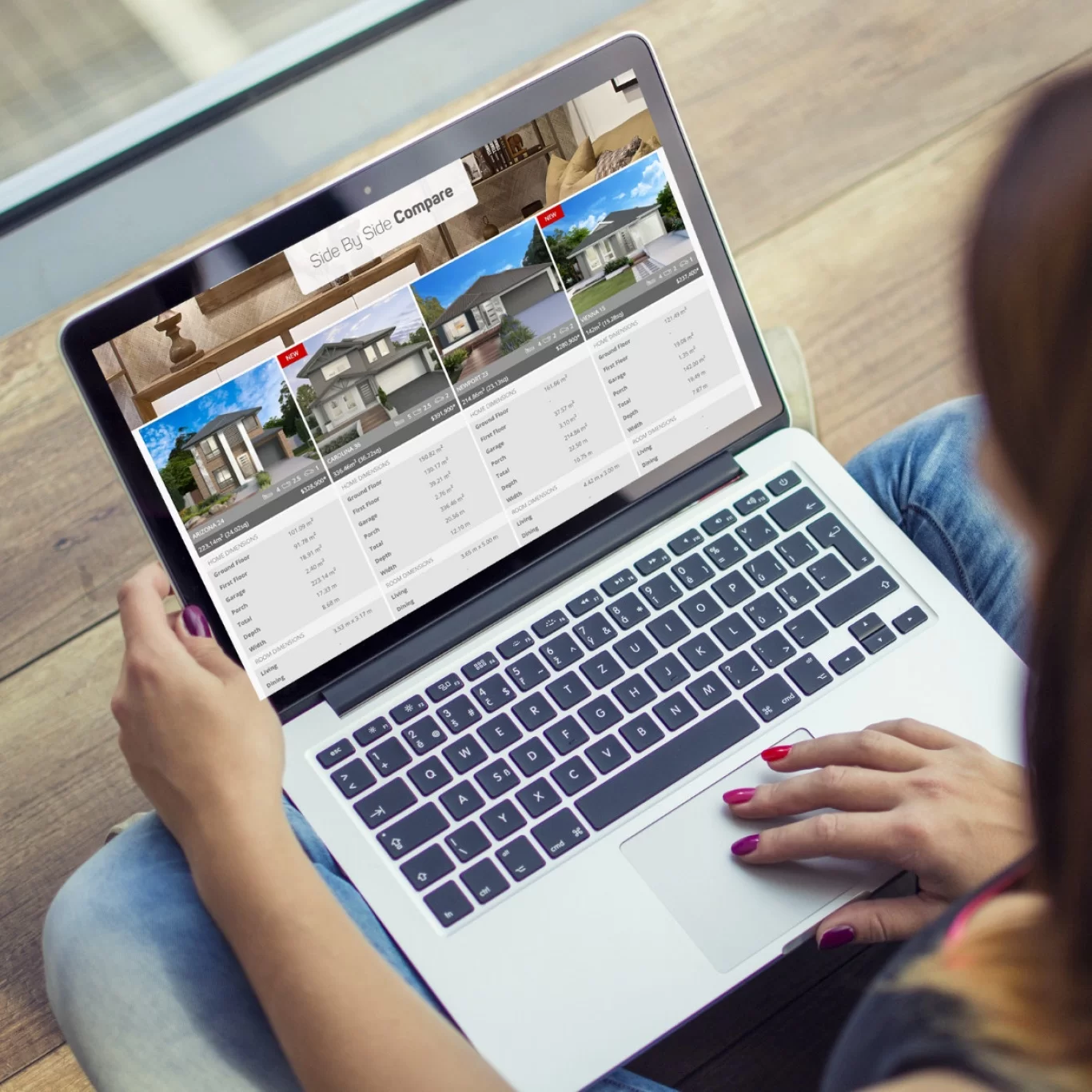The Australian dream home has transformed. It's no longer just about four walls and a roof - it's about crafting your personal paradise where the line between inside and outside simply disappears. At the heart of this evolution is the pool: not just a swimming spot, but the centerpiece of modern Australian living.
In 2025, pool design has become completely intertwined with home architecture. The best houses aren't simply built with pools; they're designed around them, celebrating water as a natural extension of living space rather than an afterthought.
The numbers tell us an exciting story: homes with perfectly integrated pools command 10-30% higher resale values in premium Australian markets. But the true value goes beyond financial gain - it's measured in those summer evenings with friends, weekend mornings with children splashing, and quiet nights watching moonlight dance across calm water.
What makes today's pool-centered homes so special? It's all about smart integration. Australia's leading architects are creating spaces where you're just steps away from the kitchen to poolside, not a journey. Where climate control extends to your water temperature. Where sustainability means your pool works with nature, not against it.
Is your current home maximising Australia's incredible outdoor lifestyle? Or is it working against it?
This isn't just about luxury - it's about living in perfect harmony with our climate and culture. The most impressive pool homes of 2025 blend indoor comfort with outdoor freedom in ways that feel both innovative and absolutely Australian.
Are you ready to discover how Australia's ultimate house designs for pools are transforming the way we live? Let's dive in and explore what's possible when home and water become one.
Modern Pool House Architecture: Maximising Aesthetic and Functionality
Pools increase Australian property values by 10-30% when designed with luxury features
High-quality outdoor living spaces offer better ROI than many indoor renovations
Strategic pool designs combine functionality with aesthetic appeal for year-round use
Pools have transformed into central elements of Australian luxury home design, extending far beyond simple water features. As sustainability becomes standard in pool design, the focus has shifted toward creating complete outdoor experiences that perfectly blend comfort, style, and functionality. These spaces now serve as extensions of the home's living area rather than separate features.
The question "Is a pool a good investment in Australia?" deserves careful consideration. According to CoreLogic data, a well-designed pool with luxury features can increase property value by 10-30% in premium markets like Sydney's Eastern Suburbs and Northern Beaches, Gold Coast waterfront areas, and parts of Melbourne and Perth. The key factor is integration,pools that connect seamlessly with high-quality outdoor living spaces deliver the best investment returns.
Research from the Real Estate Institute of Australia shows that outdoor living renovations, including pools with dedicated living spaces, now deliver better returns than many interior renovations. This shift reflects the evolving Australian lifestyle that places greater emphasis on outdoor entertainment and relaxation areas.
Indoor-Outdoor Flow
The most successful pool designs in Australia create seamless transitions between indoor and outdoor spaces. This integration isn't merely about convenience,it fundamentally transforms how homeowners experience their property, essentially expanding the functional living area without traditional boundaries.
Leading Australian architects like Shaun Lockyer and MCK Architecture have pioneered designs that eliminate visual barriers between internal and external zones. Their projects feature large glass sliding or bi-fold door systems that completely disappear when opened, creating unified spaces where the living room effectively extends to the pool edge. These designs often incorporate consistent flooring materials that flow from inside to outside, reinforcing the connection.
Covered transitional spaces play a crucial role in this design approach. Modern Australian pool houses frequently include deep overhangs or pergolas that provide shade and weather protection while maintaining the visual connection between spaces. These areas typically feature ceiling fans, heating elements, and carefully designed lighting systems that enable comfortable use regardless of weather conditions. The most successful designs consider sun angles throughout the year, positioning rooflines to block summer sun while allowing winter warmth to penetrate.
Retractable screens and smart glass systems represent the cutting edge of indoor-outdoor flow technology. Companies like Centor and Louvre Windows Australia offer systems that respond to weather conditions automatically, adjusting transparency and airflow based on temperature, sunlight, or rain. These technologies help maintain comfortable conditions in transition spaces throughout the year, extending the usable pool season significantly.
High-End Features
Premium materials distinguish luxury pool spaces from standard installations, with natural stone leading current trends. Travertine remains popular for its heat-resistant properties and natural appearance, but bluestone from Victorian quarries has gained significant market share for its distinctive colour and durability. These materials typically cost 30-40% more than concrete alternatives but offer superior longevity and aesthetic appeal.
Outdoor kitchens have evolved beyond basic barbecue setups to become fully functional cooking spaces. High-end pool houses now frequently include commercial-grade appliances designed for outdoor use, including pizza ovens, teppanyaki plates, and specialised refrigeration systems. These kitchens often feature durable materials like stainless steel, granite, or composite surfaces that withstand pool chemicals and weather exposure.
Built-in spa features represent one of the fastest-growing segments in luxury pool design. Rather than standalone hot tubs, designers now incorporate heated spa sections directly into the pool structure, creating visual continuity while providing distinct functionality. These integrated spas typically include hydrotherapy jets, specialised lighting, and temperature control systems that operate independently from the main pool.
Technological Integration
Smart technology has transformed pool management and the overall experience of outdoor living spaces. High-end systems now offer comprehensive control via smartphone applications, managing everything from water chemistry to entertainment features. These systems can automatically adjust chlorine levels, pH balance, and temperature based on usage patterns and weather conditions.
Audio-visual installations have become standard components in luxury pool areas. Weather-resistant sound systems from companies like Sonance and Origin Acoustics provide distributed audio without visible speakers, while outdoor-rated televisions from Séura and SunBriteTV allow for entertainment without compromising design aesthetics. These systems typically integrate with home automation platforms, allowing coordinated control of lighting, sound, and pool features.
Lighting design has progressed significantly beyond basic underwater lights. Current systems utilise programmable LED technology to create adjustable moods and highlight architectural features. Landscape lighting specialists now coordinate pool illumination with garden and facade lighting to create cohesive nighttime scenes that enhance the property's appearance and extend usable hours.
Investment Value Considerations
For homebuyers considering the financial implications of pools, several factors determine return on investment. Location plays a critical role,pools add more value in warmer regions like Queensland and Northern NSW than in cooler southern states. However, this gap has narrowed as heating technology has improved, making year-round pool use more feasible throughout Australia.
The quality of design and construction significantly impacts investment returns. According to property valuation data from Herron Todd White, poorly designed or maintained pools can actually detract from property values, while thoughtfully integrated luxury pool areas consistently add value. The key differentiator is how well the pool area functions as a genuine living space rather than an isolated feature.
Housing market data from 2023-2025 shows that high-end properties with well-designed pool areas spend 15-20% less time on market compared to similar properties without pools. This liquidity advantage represents a significant but often overlooked benefit, particularly in slower market conditions when distinctive features can attract buyer attention.
Design for Varied Weather Conditions
Australia's diverse climate demands thoughtful design approaches for year-round pool area enjoyment. Successful luxury pool spaces incorporate features that address both weather extremes and seasonal variations.
Retractable or adjustable coverage systems represent the most flexible solution for weather management. Modern designs include motorised pergolas with louvered roofs that can adjust to changing conditions, providing shade during intense summer heat while opening to capture winter sunlight. These systems typically cost between $15,000-$30,000 but significantly extend the functional use period of pool areas.
Wind management represents a critical but often overlooked design consideration. Strategic placement of glass barriers, vegetation screens, or structural elements can create protected microclimates around pool areas without compromising views or access. These windbreak features prove particularly valuable in coastal areas where afternoon sea breezes might otherwise make evening pool use uncomfortable.
Heating solutions have evolved beyond traditional gas and electric systems. Hybrid approaches that combine solar panels with heat pump technology offer the most energy-efficient option for maintaining comfortable water temperatures. These systems typically cost 20-30% more to install than conventional heaters but can reduce operating costs by up to 70% over their lifetime.
Design for Different Lifestyles
The most successful pool areas reflect the specific needs and preferences of homeowners rather than following generic design templates. Let's dive into how this personalised approach begins with thoughtful consideration of how the space will actually be used.
Entertainment-focused designs emphasise generous deck space, integrated seating areas, and robust support facilities like changing rooms and outdoor bathrooms. These spaces typically allocate 60-70% of the total area to non-water features, recognizing that most social time occurs around rather than in the pool itself. Built-in ice chests, beverage stations, and flexible seating configurations support various gathering sizes.
Wellness-oriented pool spaces incorporate features that support physical and mental health. Lap pools with consistent depths and unobstructed swimming lanes serve exercise needs, while adjacent yoga decks or meditation areas provide space for complementary activities. These designs often include features like cold plunge pools, steam showers, or outdoor massage areas that extend the wellness experience beyond swimming.
Family-friendly luxury pool designs balance sophisticated aesthetics with practical safety features. Innovations like glass pool fencing provide required security without visual barriers, while beach-entry shallow zones offer safe access for children without compromising design aesthetics. These areas frequently include storage solutions for pool toys and equipment, keeping the space functional yet visually uncluttered.
Common Pool Orientation Choices: Maximising Sunlight and Privacy
Strategic pool placement transforms your outdoor experience while optimising temperature and reducing energy costs
North-facing positions capture maximum sunlight in Australia's southern hemisphere
Perfect orientation minimises water evaporation while creating a private backyard retreat
The placement of your swimming pool is a decision that impacts your enjoyment for years to come. In Australia's unique climate, pool orientation plays a key role in temperature management, water conservation, and creating the ultimate private retreat. Let's dive into how to position your pool for the most efficient and enjoyable results in 2025.
Factors Influencing Orientation
Pool orientation isn't simply about aesthetics,it's a careful strategy balancing practical considerations. When planning your pool's position, several key features come into play that will transform your swimming experience.
The relationship between your pool and home creates the foundation for your outdoor living space. Experts recommend positioning pools within sight of main living areas for safety and convenience. "Pick the size and type of tiles for the coping and surrounds first, and design the pool and pool area for full tiles. This results in a high end finished look," advises award-winning pool designer Rhiannon Royall. This approach ensures the pool integrates seamlessly with your home's architecture rather than appearing disconnected.
Natural elements significantly impact pool performance. Trees provide welcome shade but can also drop leaves and debris, increasing maintenance. Consider the mature height and spread of nearby vegetation when positioning your pool. Wind patterns are equally important,in areas with consistent strong winds, a pool positioned to catch these winds will experience faster water evaporation and heat loss. Wind barriers like pergolas, screens, or strategic plantings can help maximise comfort while maintaining views and airflow.
Legal requirements form another crucial consideration. Australian councils enforce strict regulations about pool placement, including minimum distances from property boundaries, homes, and existing structures. These setback requirements vary by location,for example, Sydney typically requires pools to be at least 900mm from property lines, while Brisbane's requirements may differ. Additionally, pool fencing regulations impact your design choices, with most jurisdictions requiring barriers at least 1.2 meters high with specific gate specifications.
Orientation Based on Climate Zones
Australia's varied climate zones require different approaches to pool orientation. In tropical northern regions like Cairns or Darwin, where cooling is the primary concern, pools benefit from afternoon shade to prevent overheating. In temperate zones like Sydney or Melbourne, maximising sun exposure extends the swimming season.
In cooler southern regions, north-facing pools receive maximum sunlight, making them perfect for natural heating. Western-facing pools catch afternoon sun but may become uncomfortably warm in summer months without shade provisions. Eastern-facing pools enjoy morning sun but cool off earlier in the day,ideal for early swimmers but potentially too cool for evening use without supplemental heating.
Benefits of Optimal Orientation
The direction your pool faces directly impacts your energy consumption. In Australia's southern hemisphere, north-facing pools receive maximum sunlight, reducing the need for artificial heating. This orientation can reduce heating costs by up to 30% compared to pools that receive limited direct sunlight.
Solar heating systems become dramatically more efficient with proper pool orientation. When combined with a north-facing exposure, solar systems can extend your swimming season by 2-3 months in most Australian climates. This efficiency translates to substantial savings,a properly oriented 8m x 4m pool can save over $500 annually in heating costs compared to a poorly positioned alternative.
Beyond financial considerations, temperature comfort significantly affects how often you'll utilise your pool. Studies show that pools with optimal sun exposure are used nearly twice as frequently as those that cool too quickly. For families with children, this means more value from your investment as the pool becomes a regular activity center rather than an occasional feature.
Which Direction is Best for Swimming Pools in Australia?
The ideal pool orientation in Australia depends primarily on your location and priorities. For most of the country, north-facing pools receive maximum sunlight throughout the day, making this direction perfect for natural heating and extended swimming seasons. This orientation is particularly valuable for solar-heated pools, as it maximises energy collection.
East-facing pools receive morning sun and afternoon shade,ideal for early swimmers who prefer cooler afternoons. This orientation works well in Queensland and northern territories where afternoon heat can make pools uncomfortably warm. West-facing pools receive afternoon and evening sun, extending swimming hours later but potentially requiring more cooling in summer months.
South-facing pools receive the least direct sunlight in Australia. While this may seem disadvantageous, in extremely hot northern regions, this orientation helps maintain comfortable water temperatures without excessive heating. For properties with spectacular southern views, this orientation may be worth the trade-off despite reduced natural heating.
Conclusion
As we've explored the best house design with pools for 2025, Australia continues to lead with features that perfectly balance beauty, function, and sustainability. The trends we've covered,from solid foundations to smart home integration, sustainable elements to luxurious outdoor spaces,showcase how pool areas have transformed into the centerpiece of Australian home design.
Your perfect pool house will absolutely reflect your personal style while offering practical features designed for our unique climate. Whether you're planning a sleek modern design with seamless indoor-outdoor flow or a sustainable setup with solar heating and water-efficient systems, the right design not only enhances your daily experience but also maximises your property value.
Remember that orientation is key,strategically capturing sunlight while maintaining privacy creates an unforgettable swimming environment. And let's not overlook the growing focus on health features like swim jets alongside entertainment options that transform your pool area into a true living space.
The ultimate house designs for pools in Australia aren't just about luxury,they're expertly crafted spaces where families connect, entertain, and unlock relaxation in our outdoor-loving culture. Your pool area isn't just an addition to your home; it's an extension of your lifestyle that you're meant to organise and enjoy to its fullest potential.

